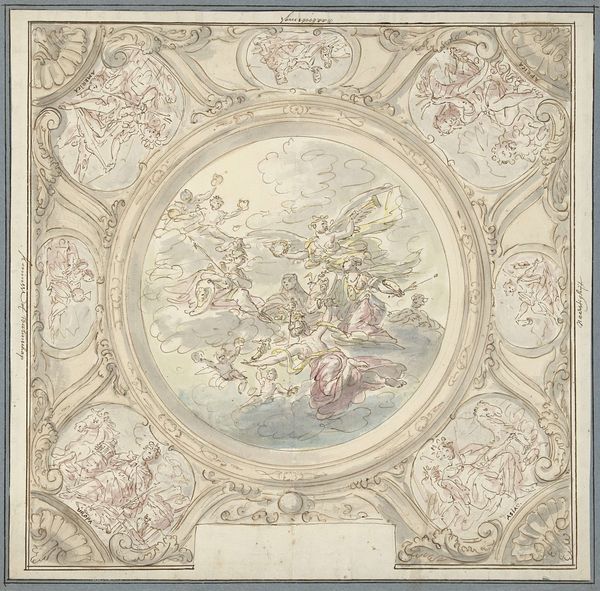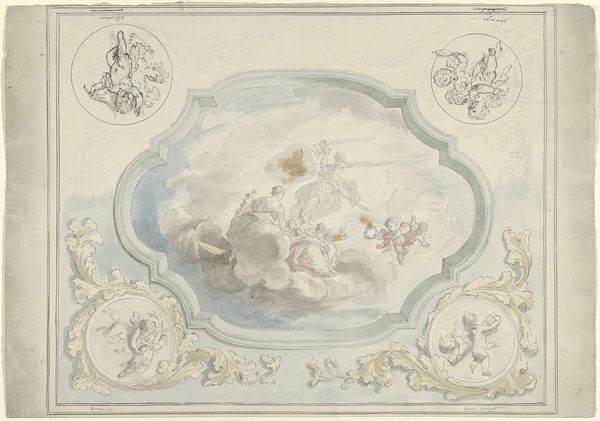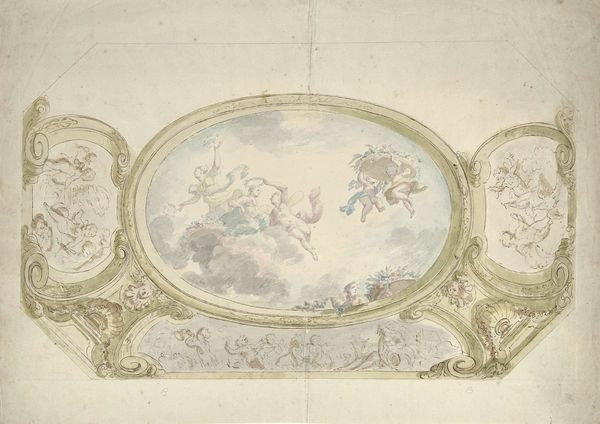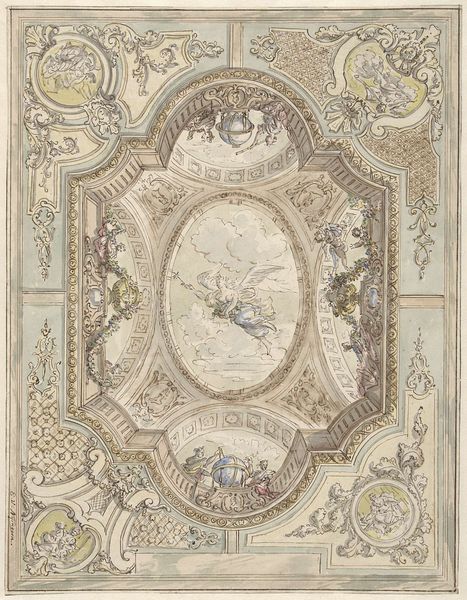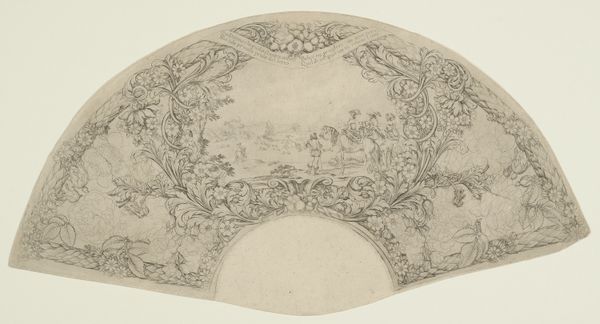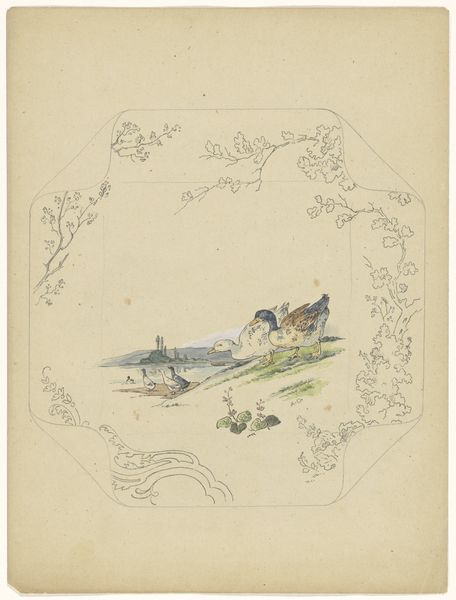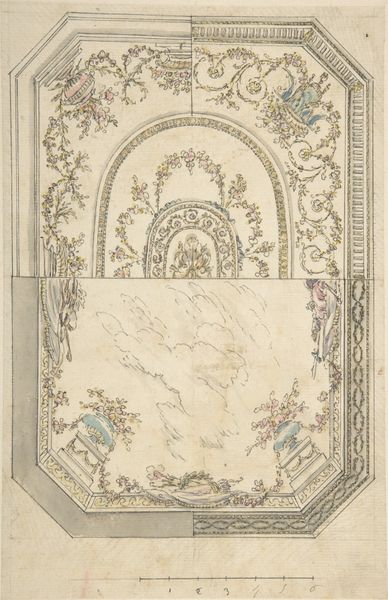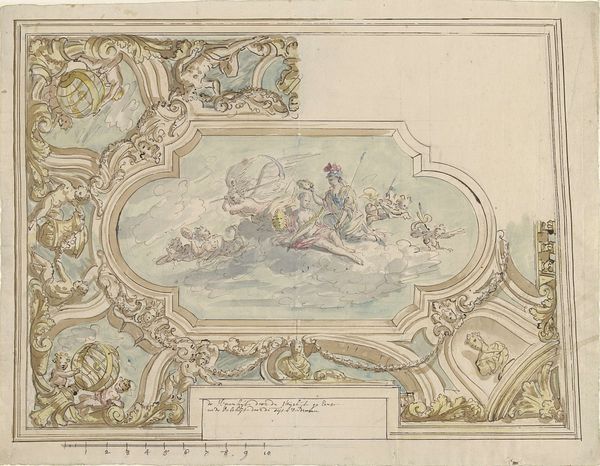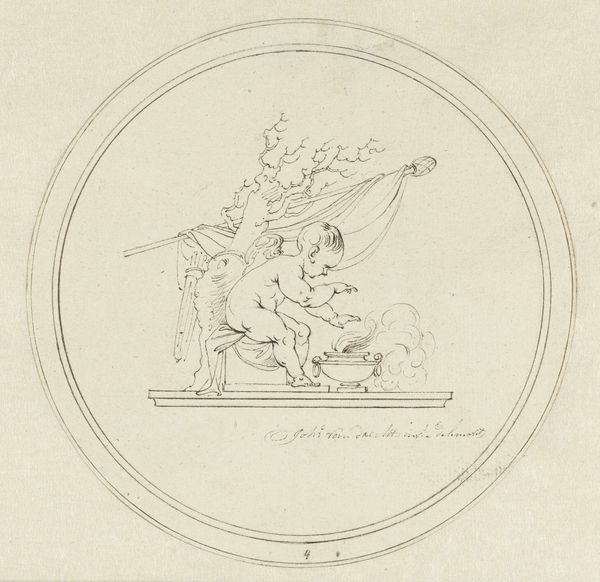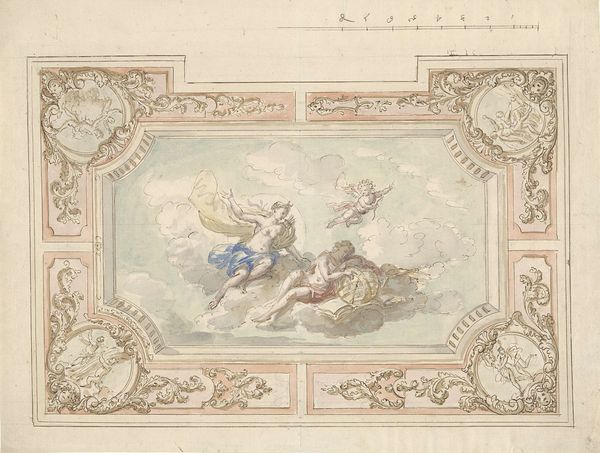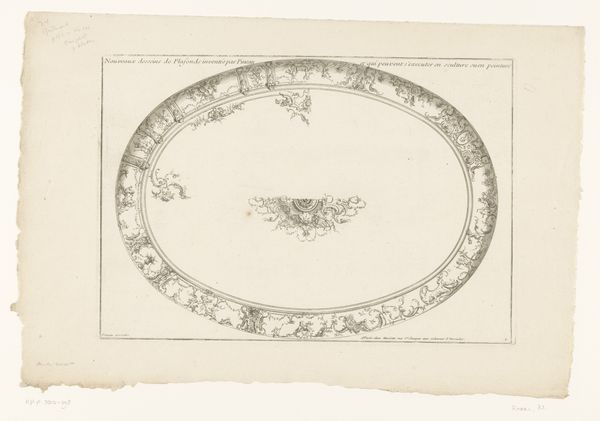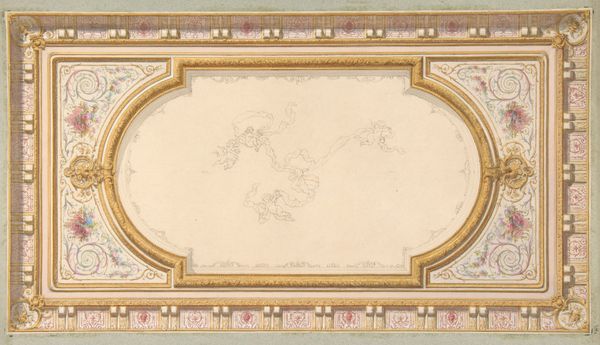
drawing, paper, watercolor, ink
#
drawing
#
allegory
#
baroque
#
etching
#
paper
#
watercolor
#
ink
#
history-painting
#
watercolor
Dimensions: height 478 mm, width 381 mm
Copyright: Rijks Museum: Open Domain
Curator: This is "Ontwerp voor een plafondschildering met de doos van Pandora" – a design for a ceiling painting depicting Pandora’s Box – created between 1677 and 1755 by Elias van Nijmegen, using ink, watercolor and paper. Editor: My first impression is that the figures look weightless, adrift among these swirling clouds. There's a tentative lightness about it, like a breath held before a revelation – or perhaps a disaster. Curator: Absolutely, it captures a moment pregnant with possibility and, frankly, patriarchal anxiety. We have Pandora, who, against express warnings, opens a box – or in some accounts, a jar – unleashing all manner of evils upon the world. Think about the layers of misogyny inherent in framing a woman’s curiosity as the source of human suffering. Editor: Right. Pandora herself is presented in a fairly traditional guise, seated amidst billowing clouds and surrounded by cherubic figures. The box itself, however, is subtly presented— a potential source for emotional projection. I'm particularly drawn to how Van Nijmegen uses the symbolism of the clouds to suggest the immaterial and all-encompassing nature of the consequences. Curator: Indeed. Consider the visual language here. It's Baroque, so think about the prevailing socio-political structures it reinforced. Order, hierarchy, divine right...and what happens when those orders are disobeyed? This artwork visualizes that exact moment of transgression and makes a spectacle out of blaming the "other," who in this case, is female. Editor: But isn’t there something else there, too? Even within that restrictive framework? Pandora is at the center, after all. Her transgression, whatever you believe it to represent, sets events in motion. It is a visual testament to agency. Curator: That's where contemporary readings become crucial. Can we reclaim Pandora's narrative? See her act as a critique against absolute authority? The beauty of art lies in its polysemy – it contains multiple meanings and allows for evolving interpretations. Editor: So, perhaps Van Nijmegen unwittingly designed something more subversive than he imagined. Thanks to your perspective, this is much more interesting.
Comments
No comments
Be the first to comment and join the conversation on the ultimate creative platform.
